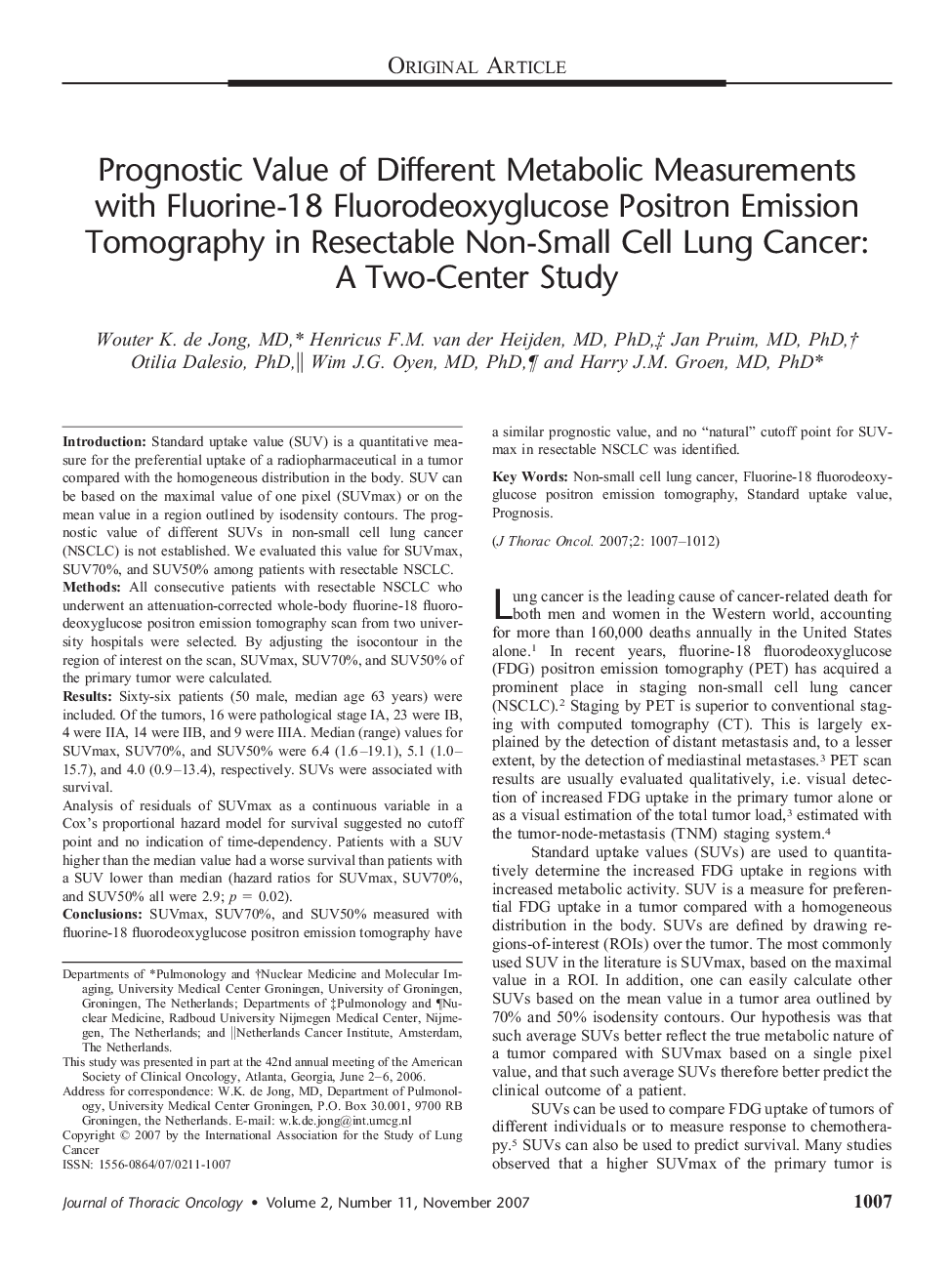| Article ID | Journal | Published Year | Pages | File Type |
|---|---|---|---|---|
| 3992225 | Journal of Thoracic Oncology | 2007 | 6 Pages |
IntroductionStandard uptake value (SUV) is a quantitative measure for the preferential uptake of a radiopharmaceutical in a tumor compared with the homogeneous distribution in the body. SUV can be based on the maximal value of one pixel (SUVmax) or on the mean value in a region outlined by isodensity contours. The prognostic value of different SUVs in non-small cell lung cancer (NSCLC) is not established. We evaluated this value for SUVmax, SUV70%, and SUV50% among patients with resectable NSCLC.MethodsAll consecutive patients with resectable NSCLC who underwent an attenuation-corrected whole-body fluorine-18 fluorodeoxyglucose positron emission tomography scan from two university hospitals were selected. By adjusting the isocontour in the region of interest on the scan, SUVmax, SUV70%, and SUV50% of the primary tumor were calculated.ResultsSixty-six patients (50 male, median age 63 years) were included. Of the tumors, 16 were pathological stage IA, 23 were IB, 4 were IIA, 14 were IIB, and 9 were IIIA. Median (range) values for SUVmax, SUV70%, and SUV50% were 6.4 (1.6–19.1), 5.1 (1.0–15.7), and 4.0 (0.9–13.4), respectively. SUVs were associated with survival.Analysis of residuals of SUVmax as a continuous variable in a Cox's proportional hazard model for survival suggested no cutoff point and no indication of time-dependency. Patients with a SUV higher than the median value had a worse survival than patients with a SUV lower than median (hazard ratios for SUVmax, SUV70%, and SUV50% all were 2.9; p = 0.02).ConclusionsSUVmax, SUV70%, and SUV50% measured with fluorine-18 fluorodeoxyglucose positron emission tomography have a similar prognostic value, and no “natural― cutoff point for SUVmax in resectable NSCLC was identified.
